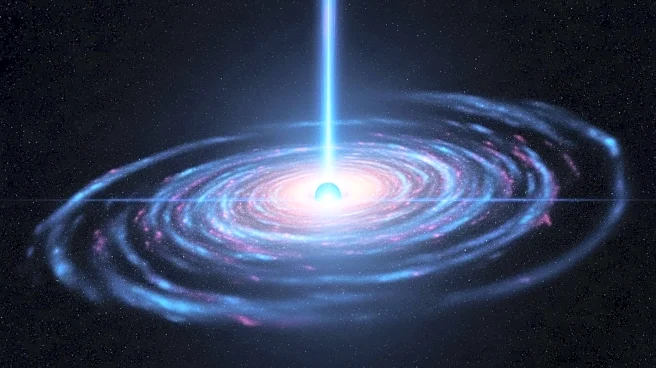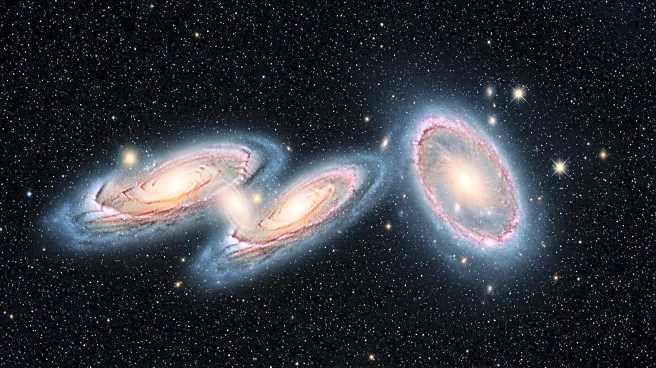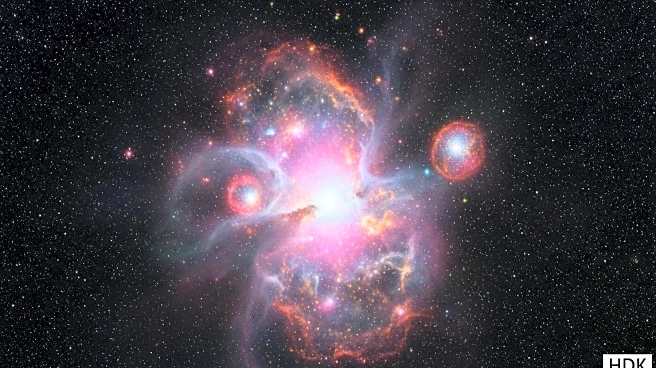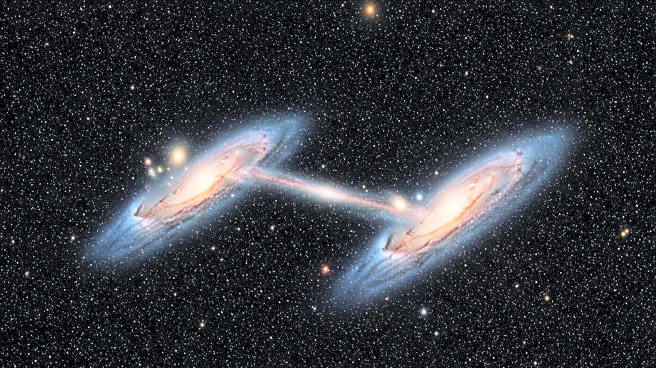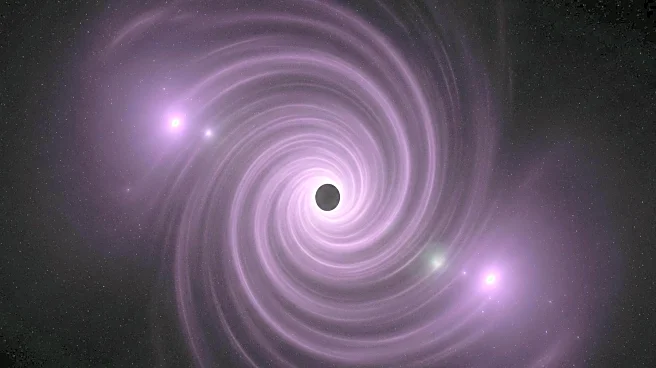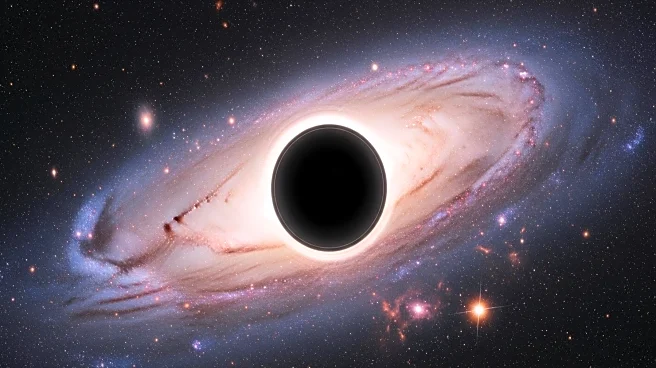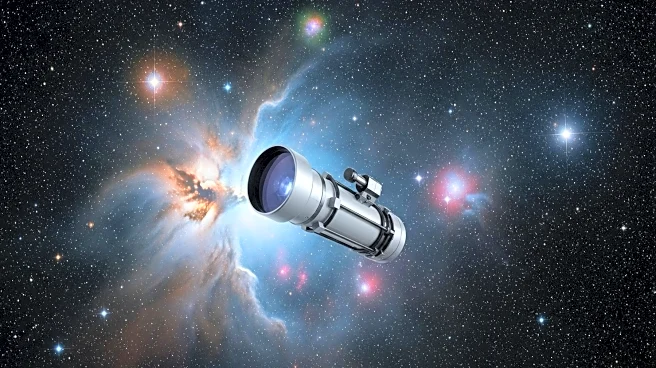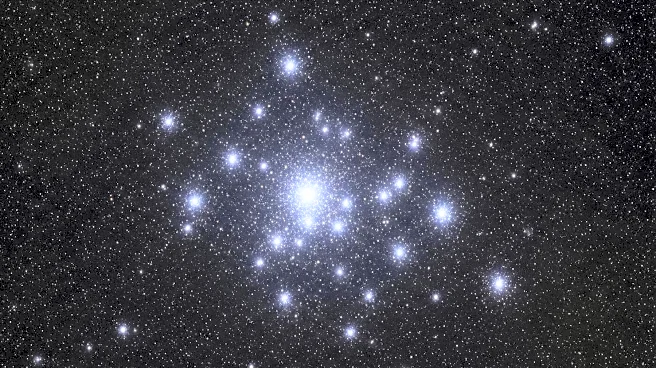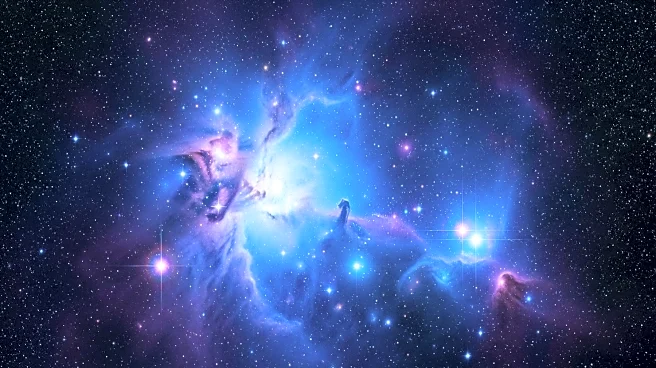What's Happening?
A team of astronomers led by Dr. AN Tao from the Shanghai Astronomical Observatory has discovered a rogue black hole in a dwarf galaxy located approximately 230 million light-years away. This black hole is unique because it is not situated at the galactic center, as is typical, but is instead offset by nearly one kiloparsec. It is actively feeding and producing radio jets, making it one of the most convincing off-nuclear cases ever confirmed. The discovery, published in Science Bulletin, suggests that black hole growth is not confined to galactic centers, offering new insights into how supermassive black holes could have rapidly grown in the early universe. The research focused on a dwarf galaxy named MaNGA 12772-12704, which exhibits weak active galactic nucleus signatures. Follow-up observations revealed a radio core brightness temperature exceeding one billion kelvins and a jet structure extending southeastward, confirming the presence of an actively accreting, off-nuclear black hole.
Why It's Important?
This discovery challenges the prevailing view that supermassive black holes primarily grow at galactic centers. It demonstrates that intermediate-mass black holes located outside the galactic nucleus can also sustain accretion and produce jets. This finding provides direct observational support for the idea that distributed feeding and multi-site growth could be a pathway for the rapid formation of supermassive black holes in the early universe. The study prompts a reevaluation of black hole-galaxy co-evolution, suggesting that black holes may quietly reshape their host galaxies from the outskirts. The implications extend to understanding galactic dynamics and star formation, as wandering black holes can inject energy into their surroundings through powerful outflows.
What's Next?
The study transforms wandering black holes from theoretical speculation into direct observational reality. With next-generation telescopes, such 'lost black holes' may become more commonly detected. Future advancements in optical and radio telescopes will allow for higher precision measurements of galactic centers and structures, potentially resolving sub-parsec-scale micro-jets. These developments could lead to breakthroughs in confirming and statistically studying off-nuclear black holes, revealing that wandering black holes might be silent travelers at the edges of galaxies, quietly influencing cosmic evolution.
Beyond the Headlines
The discovery of a rogue black hole in a dwarf galaxy highlights the potential for black holes to exist outside traditional galactic centers, reshaping theories of cosmic evolution. This finding suggests that black holes can influence their host galaxies from the outskirts, challenging the notion that they are merely central 'engines.' The study opens new avenues for understanding the role of black holes in galactic dynamics and star formation, emphasizing the need for further research into the distribution and impact of wandering black holes.

